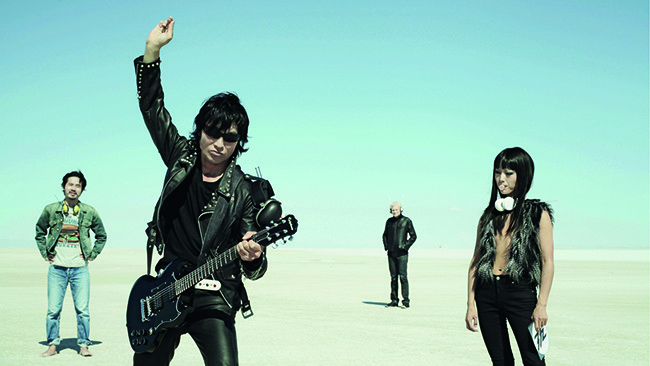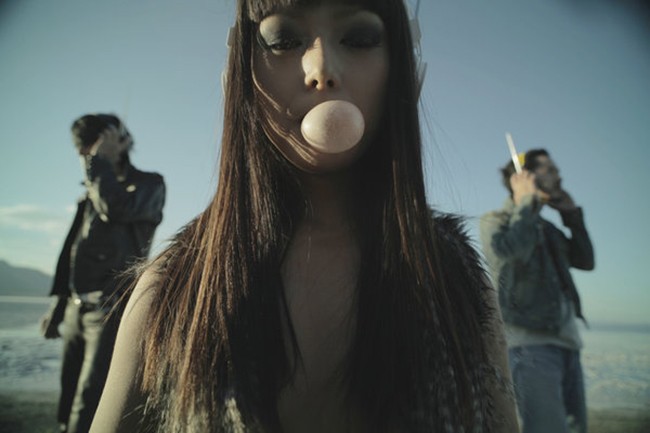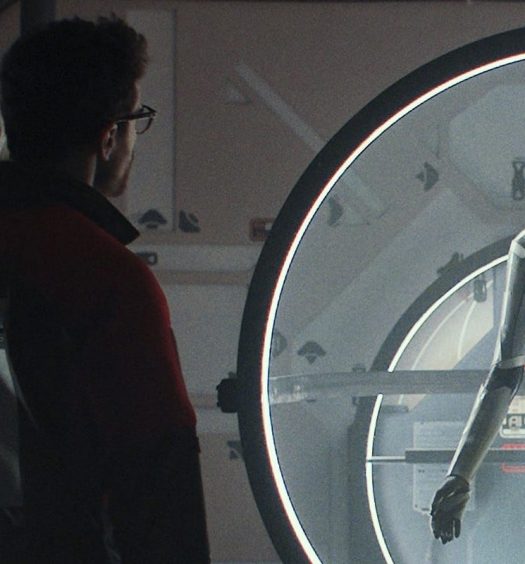Inspired by Japanese cinema, manga, and graphic design, Fonotune: An Electric Fairytale, is an intriguing new film by first time feature director Fint (aka Fabian Huebner), which may well divide audiences.
Going into this film, you should be aware that this has been made very much as an art project, encompassing not just the film, but also a slew of surrounding works, such as comic books and exhibitions. This becomes clear as you watch the film, as it certainly, and very knowingly has one foot in the Cinéma du look camp. There is substance there, but it definitely has a strong leaning towards a visual style, and form, separate to any narrative.

The plot is centred on a disparate group of characters, each travelling towards an unknown location, through sand dunes, a city, and then across some salt flats. The time and location is never quite shared, but the indications are it’s some kind of ‘retro-future’ where the world is about to end. Each of these pilgrims, Mono (Fint himself), Stereo (Yûho Yamashita), Analog (Kazushi Watanabe), and Bubblegum (Kiki Sukezane – Lost In Space, Heroes Reborn) wear radio headphones, and are urged on by an over the top DJ Radio (Yusuke Yamasaki) to attend the final concert of a mythical rock star Blitz (Guitar Wolf Seiji).

This is essentially the backbone of the film, with almost every part then being played out as allegory, with many meanings, some on the surface and some more hidden. To a degree, I would imagine the filmmakers would like people to draw their own conclusions and extrapolate various meanings from the same material. Immediately after watching this, I found I could draw several different ideas from it, whether that be as discussion piece about isolation in the modern world, or the death of a particular type of art appreciation in the face of digital technology, or perhaps the cyclical nature of technology and how art revisits old forms, as well as a few other concepts. Over time, this film will seep into your consciousness and new ideas will no doubt emerge.
There are many points in this film that touch on myriad subjects, such as consumerism, human interaction, isolationism, relationships, entitlement, faith, and passion. From the silent Mono, who embodies the isolationist point of view, who essentially is indifferent to Stereo, the animated street hooker, to the easy-going and somewhat more caring Analog, and the seemingly vacuous Bubblegum, we get all of these played in different variations.

The visuals and design are where this film really takes off, and it has been spectacularly shot by cinematographer Jon Britt. Each frame is carefully constructed, and has a real impact, utilising the 3 distinct locations extremely well, but also using some great pieces of framing to juxtapose the characters; not just to each other, but also the environment.

The soundtrack is also very well put together, featuring Stereo Total, Electric Eel Shock, Warren Suicide, and many other artists, in a stylised set of radio stations that burst in and out of the overall soundscape. The only odd point is that for people wearing headphones a lot, there isn’t as much music as you’d think, although there could be a point being made even with that.
I suspect that on the whole, this will divide some audiences, with some finding that the lack of any in depth characterisation, and the more Lynchian leanings putting them off this film. Others will relish the uncertainty, and the vagueness that runs through it. At the very least, it is an interesting experiment that looks great.


